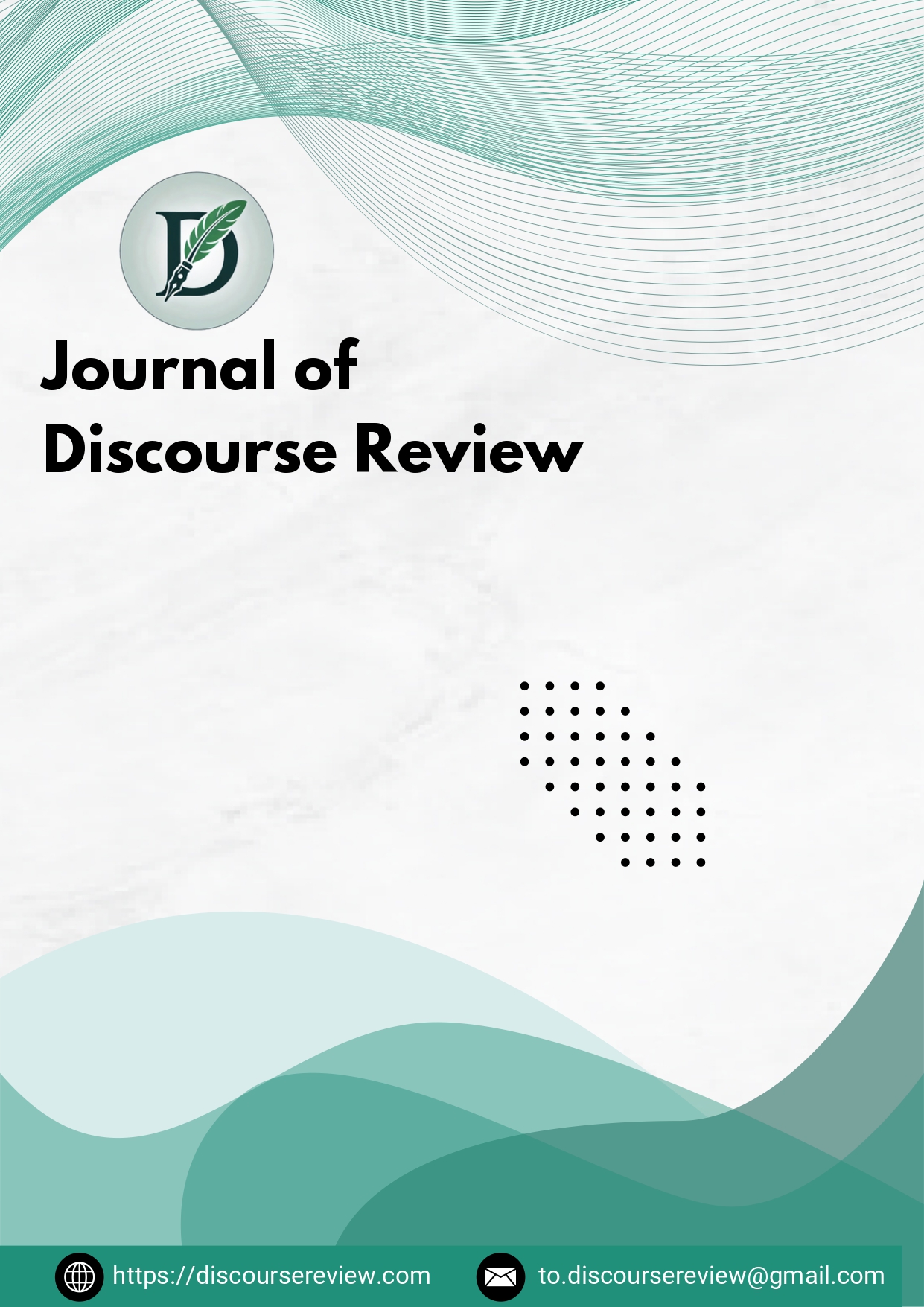
Journal of Discourse Review
Open Access Humanitarian scholarship
7 days
Time to first decision

Open Access Humanitarian scholarship
Time to first decision
Volume: 1 Issue: 1
Year: 2025, Page: 12-22,
Received: Feb. 10, 2025 Accepted: March 21, 2025 Published: April 22, 2025
Haruki Murakami’s Kafka on the Shore presents a complex engagement with gender identity through the character of Oshima, a transgender man whose narrative unsettles established gender binaries. This paper investigates Oshima’s role as a discursive and social agent who negotiates identity within and against normative frameworks. Drawing upon contemporary gender theory and discourse analysis, the study focuses on Oshima’s self-narration, his dialogic interactions, and the socio-cultural contexts that inform his positioning. The analysis situates Murakami’s text within a broader transnational framework that accounts for intersecting discourses of gender in both Global North and Global South contexts. Oshima’s characterization challenges culturally inscribed binaries and contributes to a critique of essentialist identity models. The paper argues that Murakami constructs a narrative space in which gender is not a fixed category but a performative and contested construct. This literary representation functions as a critique of socio-normative conventions and opens up interpretive possibilities for understanding gender as fluid and relational. In doing so, Kafka on the Shore contributes to evolving literary and critical discourses that interrogate identity formations beyond traditional categorical boundaries.
Keywords: Gender, discourse, identity, transgender, hegemonic binaries, deconstruction.
Azuma, H. (2009). Otaku: Japan’s database animals (J. E. Abel & S. Kono, Trans.). University of Minnesota
Press.
Baudrillard, J. (1981). Simulacra and simulation (S. F. Glaser, Trans.). University of Michigan Press.
Butler, J. (2006). Gender trouble: Feminism and the subversion of identity (1st ed.). Routledge.
https://doi.org/10.4324/9780203824979
Butler, J. (2004). Undoing gender. Routledge.
Chakrapani, V., Boyce, P., & Rajkumar, M. (2012). Hijras in India: The struggle for identity and recognition.
Sexuality and Culture, 16(4), 434-451.
Chatterjee, S. (2019). Gender ambiguity in South Asian and Japanese literature: A comparative analysis. Journal
of Transcultural Studies, 8(2), 75-96.
Chughtai, I. (1942). Lihaaf. Adab-i-Latif.
Derrida, J. (1976). Of grammatology (G. C. Spivak, Trans.). Johns Hopkins University Press.
Fairclough, N. (1992). Discourse and social change. Polity Press.
Faris, W. B. (2004). Ordinary enchantments: Magical realism and the remystification of narrative. Vanderbilt
University Press.
Foucault, M. (1976). The history of sexuality: Volume 1: The will to knowledge (R. Hurley, Trans.). Pantheon
Books.
Foucault, M. (1978). The history of sexuality, Vol. 1: An introduction (R. Hurley, Trans.). Pantheon Books.
Fujii, S. (2017). Women in Murakami: Between idealization and agency. Journal of Japanese Studies, 43(2), 267-
290.
Halberstam, J. (2005). In a queer time and place: Transgender bodies, subcultural lives. NYU Press.
Kinoshita, M. (2020). Minimalism and emotional depth in Murakami’s prose. Modern Asian Literature Review,
35(1), 45-62.
Kristeva, J. (1980). Desire in language: A semiotic approach to literature and art. Columbia University Press.
Mizumura, M. (2015). The fall of language in the age of English (M. Shion, Trans.). Columbia University Press.
Mohanty, C. (1988). Under Western eyes: Feminist scholarship and colonial discourses. Feminist Review, 30(1),
61-88.
Murakami, H. (1979). Hear the wind sing (A. Birnbaum, Trans.). Kodansha International.
Murakami, H. (1987). Norwegian wood (J. Rubin, Trans.). Vintage International.
Murakami, H. (1994). The wind-up bird chronicle (J. Rubin, Trans.). Vintage International.
Murakami, H. (2005). Kafka on the shore (P. Gabriel, Trans.). Vintage.
Murakami, H. (2009). 1Q84 (J. Rubin & P. Gabriel, Trans.). Knopf.
Nair, R. (2020). Fluid identities: Gender and selfhood in Asian literature. South Asian Review, 41(3), 201-218.
Nakamura, K. (2012). Transgender identities in Japan: Beyond the gender binary. Asian Studies Review, 36(4),
411–430. https://doi.org/10.1080/10357823.2012.732212
Napier, S. J. (2005). The fantastic in modern Japanese literature: The subversion of modernity. Routledge.
https://doi.org/10.4324/9780203974636
Ramadhita, N. N. (2015). The quest of identity of Kafka Tamura in Haruki Murakami’s Kafka on the Shore.
Passage, 2(3), 49–64. 10.21009/PASSAGE.023.06
Rao, P. (2021). Queering the margins: Gender fluidity in contemporary Indian and Japanese fiction. Comparative
Literature Journal, 56(4), 99-120.
Rubin, J. (2012). Haruki Murakami and the music of words. Vintage.
Sen, A. (2022). Postmodernist storytelling in Indian and Japanese literature. Postcolonial Studies, 29(1), 33-50.
Spivak, G. C. (1988). Can the subaltern speak? In C. Nelson & L. Grossberg (Eds.), Marxism and the
interpretation of culture (pp. 271-313). University of Illinois Press.
Strecher, M. C. (2014). The forbidden worlds of Haruki Murakami. University of Minnesota Press.
Stryker, S. (2008). Transgender history. Seal Press.
© 2025 JDR Academic Trust. This is an open-access publication distributed under the terms of the Creative Commons Attribution 4.0 International License (CC BY 4.0). https://creativecommons.org/licenses/by/4.0/
Ahmed, A. (2025). Gender, Identity, and Discourse: A Deconstructive Study of Kafka on the Shore by Haruki
Murakami. Journal of Discourse Review, 1(1), 12-22.